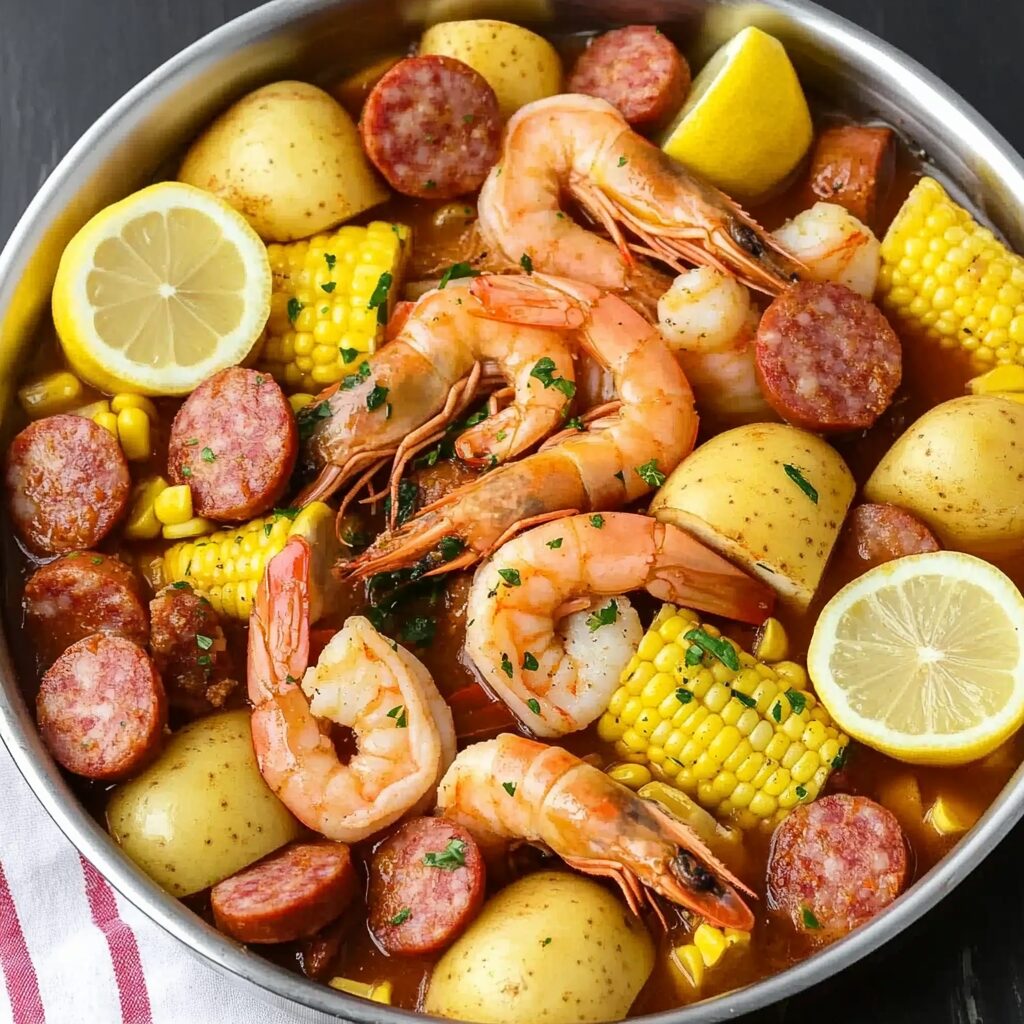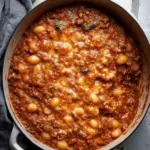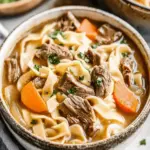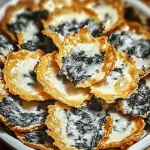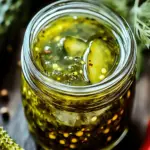The classic Shrimp Boil is the essence of coastal comfort food. Combining plump shrimp, spicy sausage, tender baby potatoes, and juicy corn all boiled together in seasoned broth makes for a rustic meal that’s rich in both flavor and tradition.
This dish is perfect for family gatherings, backyard parties, or any night you want to keep it simple but deeply satisfying. With just one pot and a few ingredients, you’ll have a hearty, crowd-pleasing dinner on the table in no time. Add a splash of butter and a squeeze of lemon, and this Southern favorite becomes an unforgettable culinary experience.
Full Recipe
Ingredients:
-
4 quarts water
-
1/4 cup seafood boil seasoning (like Old Bay)
-
1 lemon, quartered
-
4 garlic cloves, smashed
-
1 1/2 pounds baby red potatoes
-
4 ears corn, halved
-
1 pound smoked sausage, cut into 1-inch pieces
-
1 1/2 pounds uncooked shrimp (shell-on or peeled), deveined
-
4 tablespoons butter, melted
-
Chopped fresh parsley for garnish
-
Salt and pepper to taste
-
Lemon wedges for serving
Directions:
-
In a large stockpot, bring 4 quarts of water to a boil. Add seafood boil seasoning, lemon quarters, and smashed garlic. Let simmer for 5 minutes to infuse the water with flavor.
-
Add the baby potatoes and cook for 10-12 minutes or until slightly tender.
-
Add corn pieces and sausage, then simmer for another 5-7 minutes until the potatoes are fork-tender and corn is bright yellow.
-
Add shrimp and cook for 2-3 minutes, or until they turn pink and are cooked through.
-
Drain the mixture and transfer to a large serving platter or tray.
-
Drizzle with melted butter, sprinkle with chopped parsley, and season with additional salt and pepper as needed.
-
Serve immediately with lemon wedges on the side.
Prep Time: 10 minutes | Cooking Time: 25 minutes | Total Time: 35 minutes
Kcal: 410 kcal | Servings: 6 servings
A True Southern Classic: The Shrimp Boil Experience
When you think of Southern hospitality and coastal cuisine, few dishes embody both as perfectly as the iconic shrimp boil. Originating in the Southern United States—especially popular in regions like Louisiana, Georgia, and the Carolinas—this one-pot wonder is as much about community and connection as it is about flavor. Whether it’s served on newspaper-covered picnic tables at a backyard gathering or plated elegantly for a sit-down dinner, the shrimp boil is a dish that brings people together and tells a story with every bite.
The Cultural Roots of the Shrimp Boil
The shrimp boil has deep roots in Cajun and Creole cultures, tracing back to traditions brought over by French, African, Spanish, and Caribbean settlers. Over the centuries, the dish evolved into a uniquely American coastal feast. Originally, shrimp boils were a celebration—often hosted at the end of a fishing season or during a family reunion. They were meant to feed a crowd using simple, fresh, and abundant ingredients like local shellfish, seasonal vegetables, and aromatic spices.
In Louisiana, this dish is often associated with “seafood boils,” a larger family of communal meals that can include crawfish, crab, clams, and even lobster. But the shrimp boil holds a special place for its simplicity, accessibility, and bold flavor.
Why Shrimp Boil is Still a Favorite Today
One of the biggest reasons the shrimp boil remains so beloved today is its ease and versatility. This meal requires just one large pot, making cleanup simple, and the ingredients are often readily available at local grocery stores or seafood markets. It doesn’t demand advanced culinary skills, and it’s highly customizable to suit personal taste or dietary needs.
Aside from the practicality, there’s the irresistible flavor. A well-seasoned shrimp boil is aromatic and bold, with a kick of Cajun spice, the earthiness of potatoes, the sweetness of corn, and the smokiness of sausage all infusing together in the boiling pot. The shrimp, cooked shell-on or peeled, absorb all the delicious spices and remain tender and juicy.
A Social Affair: The Community Aspect
More than a meal, a shrimp boil is an event. In Southern tradition, it’s not uncommon for hosts to pour the contents of the pot directly onto a table lined with newspaper and let guests dig in with their hands. No utensils necessary—just a cold drink, good company, and some napkins. This communal dining experience is what sets the shrimp boil apart from other meals. It encourages interaction, laughter, and sharing, creating memories as flavorful as the food itself.
This dish is especially popular at outdoor events—Fourth of July parties, summer cookouts, tailgates, beachside gatherings, and even weddings. The format is casual, the vibe is festive, and everyone leaves full and happy.
Regional Variations You Might Encounter
While the core elements of a shrimp boil are generally consistent—shrimp, sausage, corn, and potatoes simmered in seasoned water—there are plenty of regional variations that add unique flair:
-
Louisiana-Style Boil: Tends to be spicier and often includes crawfish along with shrimp. Butter and hot sauce are common add-ins.
-
Low Country Boil (Georgia/South Carolina): Usually includes crab legs and a milder seasoning blend. It’s often called “Frogmore Stew” in some parts.
-
Texas Gulf Coast Version: May feature bolder spices and jalapeños, as well as boudin sausage instead of traditional smoked sausage.
-
New England Shrimp Boil: Sometimes includes clams or lobster, and the seasoning leans more on herbs and lemon rather than Cajun spices.
These differences allow the dish to reflect local preferences and ingredients, making it a truly adaptable recipe across cultures and kitchens.
Tips to Elevate Your Shrimp Boil
If you want to turn a simple shrimp boil into an unforgettable feast, here are some expert-level tips:
-
Use shell-on shrimp: Even though it’s more work for guests, cooking shrimp with the shells on preserves flavor and moisture. Plus, peeling them at the table adds to the hands-on experience.
-
Don’t skip the butter: Melted butter, infused with garlic or lemon, takes the dish over the top. Drizzle it over the finished boil or serve it on the side for dipping.
-
Add fresh herbs at the end: Chopped parsley or thyme adds brightness to the heavy flavors.
-
Get creative with seasoning: While Old Bay is a classic, you can mix in smoked paprika, chili flakes, or a homemade spice blend to suit your flavor preferences.
-
Toast your bread: Serve the dish with crusty bread to soak up the juices—or better yet, make garlic bread to add even more flavor.
Pairing Suggestions: What to Serve With It
A shrimp boil is a complete meal in itself, but you can always add a few sides or drinks to complement the experience:
-
Cold Beer or Iced Tea: Refreshing beverages balance the spice.
-
Coleslaw: A creamy or vinegar-based slaw provides crunch and contrast.
-
Cornbread or Hushpuppies: Adds a sweet, comforting element to the meal.
-
Fruit Salad or Watermelon: Light and cooling, perfect for summer.
-
Pickles or Pickled Vegetables: Bright acidity helps cut through the richness of the butter and sausage.
How to Scale It for a Crowd
Shrimp boils are made for sharing, and scaling them up is easy. For a large group, just increase the quantities proportionally. The main thing to remember is to use a large enough pot—or even multiple pots—and cook in batches if needed.
A good rule of thumb per person:
-
1/4 to 1/3 pound of shrimp
-
1 ear of corn, halved
-
2-3 baby potatoes
-
1/4 pound sausage
Also, make sure you have plenty of napkins, paper towels, and optional bibs—it can get messy, but that’s part of the fun!
Storage and Leftovers
Shrimp boil leftovers are rare, but if you find yourself with extras, they store well in the fridge for up to three days. Reheat gently to avoid overcooking the shrimp. You can also repurpose the leftovers into other dishes:
-
Shrimp and corn chowder
-
Cajun shrimp pasta
-
Sausage and potato hash
-
Shrimp salad with remoulade dressing
Just be mindful that seafood doesn’t always reheat well in the microwave—using a skillet with a little broth or butter is usually the better option.
Conclusion
The shrimp boil is a culinary celebration. It’s about more than putting food on the table—it’s about creating an experience. With its robust flavor, simple preparation, and social appeal, this Southern classic continues to thrive in kitchens and backyards across the country.
Whether you’re a seasoned chef or a first-timer, making a shrimp boil is an invitation to embrace joy, share food, and connect with others. It’s rustic, hearty, and a reminder that the best meals are the ones enjoyed together.
Bring it to your next summer gathering, impress guests at a dinner party, or simply make it for your family and create a new tradition. The shrimp boil isn’t just a dish—it’s a memory in the making.

